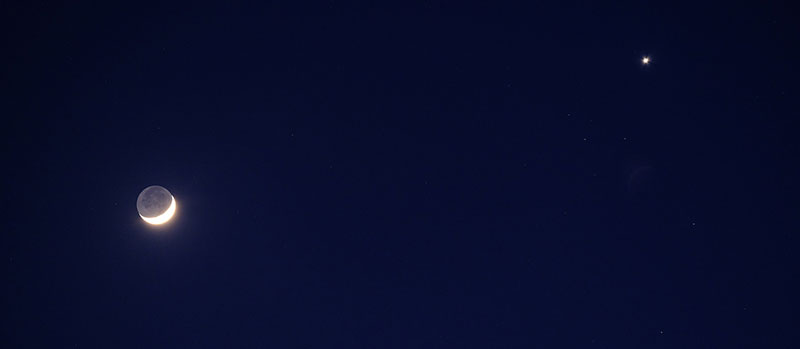Science Snippet:
2022 Astronomy Challenge
Find the fifteen brightest objects in the night sky

Over the course of the upcoming year, we’ll be trying to find the fifteen brightest objects in the sky. All the things on our checklist should be visible even from bright city skies without any optical equipment. This list excludes the two brightest objects in our sky: the sun and the moon. All of us are familiar with the sun and the moon and we don’t need any articles to tell us where to look for them. The sun has an apparent magnitude* of -26.74 making it the brightest object in our sky. It is so bright that looking directly at it is dangerous. The moon is the second brightest object in our sky with a magnitude of -12.7. That means the sun is about 400,000 times brighter than the moon! If you think about how bright a full moon is, you can see why we can’t look at the sun. To find a list of the objects we’ll be hunting for over the course of this year, print out the checklist for either the Northern or Southern Hemispheres below. (The lists have significant overlap. By each object, I list the latitudes between which you can see the object**. The list is designed to provide fifteen objects for most locations on earth but from many places, you can find more than fifteen.) Don’t worry if you didn’t start this at the beginning of the year; most of the sky objects can be found at several different times throughout the year. Around the middle of the month, I’ll post directions on how to find one or more of the objects on the list as well as interesting facts about them. (I’ll post the first set of directions by January 15.) At the end of the year, you can print out an astronomy certificate stating that you found the fifteen brightest objects of your sky. Good luck star hunting!
*Apparent magnitude is a measurement used by astronomers for ranking celestial objects according to their brightness. On this scale, a star with a lower number is brighter than one with a higher number. This means that an object with a negative number is brighter than one with a positive number. Each number represents a change in brightness of roughly 2.512 times. Since this is an exponential scale the difference quickly adds up. A magnitude 1 star is around 100 times brighter than a magnitude 6 star. (2.512 times 2.512 times 2.512 times 2.512 times 2.512 = approximately 100).
**Geographers break the earth into degrees of latitude and longitude. Your longitude is unimportant for this project. The equator is at latitude 0. Locations north of the equator are in the Northern Hemisphere while locations south of the equator are in the Southern Hemisphere. The North Pole is at 90 N and the South Pole is at 90 S. So your latitude will be listed as a number between 0 and 90 followed by a North or South. (There might be other numbers too but don't worry about them.) For instance, if I look up my latitude in Littleton, Colorado I'll see numbers like 39.6133° N, 105.0166° W. I only need the first two numbers followed by the letter N or S. So I live at roughly latitude 39 N.
Here is a PDF with the checklists for both the Northern and Southern Hemispheres. Print out the one appropriate for your location.
